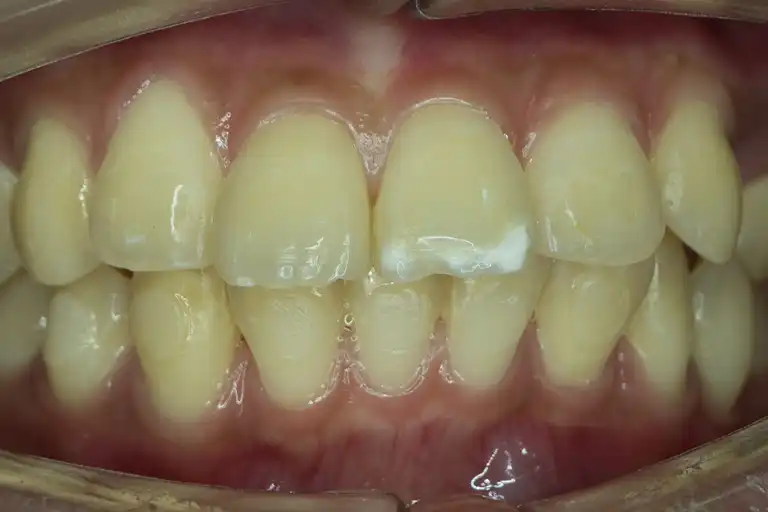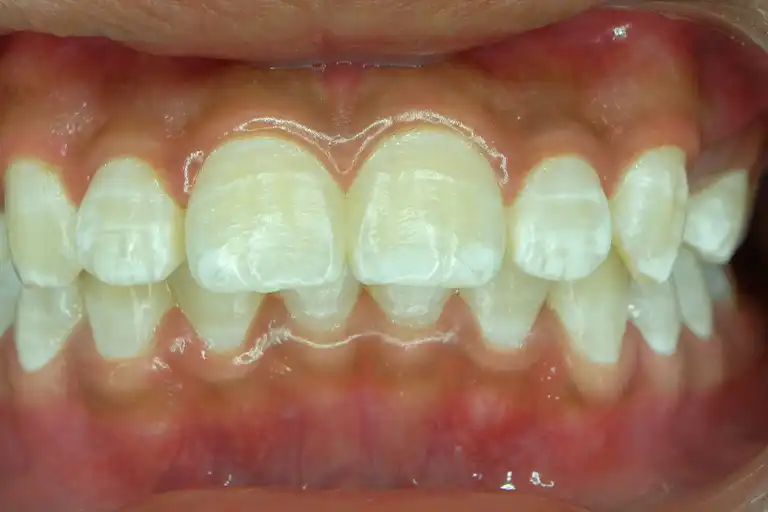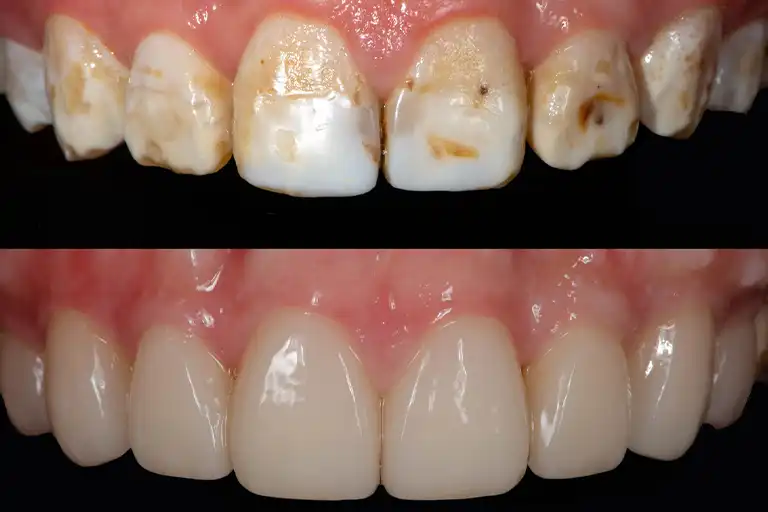Fluorosis, characterized as white or brown spots on the enamel, is the result of excessive fluoride intake during the child’s first 8 years of life. While too little fluoride makes teeth prone to decay, too much of it when consumed is trouble at young ages. Common causes of dental fluorosis are drinking fluoridated water and ingestion of fluoride toothpaste/mouthwash. However, it can be caused due to fluoride supplements and even consumption of beverages and foods that contain fluoride.
What is fluorosis?
Dental fluorosis is a cosmetic developmental defect of enamel that is caused by consuming too much fluoride during the period when teeth are developing under the gums. It results in the appearance of white or brown spots or discoloration on teeth. In severe forms, enamel can become pitted. It occurs during the teeth formation in the child’s primary or permanent teeth. So, only children under the age of 8 years are at risk. By the time enamel is fully formed and teeth have already erupted, dental fluorosis does not happen.
Fluorosis isn’t harmful and doesn’t affect the health of the teeth. But it can create permanent damage and can be a cosmetic problem. There are also treatments to address this unwanted dental issue.
What causes fluorosis?
A child can develop dental fluorosis during teeth-forming years (from birth to age 8) when an excessive amount of fluoride is ingested. The most common sources of fluoride include: drinking water, oral care products like toothpaste and mouthwash, and dietary prescribed fluoride supplements. Therefore, fluorosis risk increases:
- When your child drinks from the primary source of water that is overly fluoridated over a long period. Your tap water may contain more than the recommended level for decay prevention.
- Due to the ingestion of toothpaste or mouthwash during their toothbrushing/cleaning habit by young children. This occurs because of swallowing reflex problems and therefore taking in much of paste or mouth rinse rather than spitting out.
- Fluoride supplements prescribed to your child may be unnecessary or used inappropriately. They are given without considering that drinking water already has an optimal level of fluoride.
What are the symptoms of fluorosis?
In most cases, dental fluorosis is in very mild or mild forms. It can appear as very light white flecks, white spots, lines, or chalky areas on the surface of teeth. Often, changes are slight to notice and can only be seen by a dentist or dental hygienist.
In moderate to severe forms, teeth can have larger white spots, yellow, light brown, or dark brown spots with pitted enamel affecting teeth (pitting is small depressions on the tooth surface).
Fluorosis pictures
Here is what fluorosis looks like:



The below video will categorize dental fluorosis into six classes:
How much fluoride is too much for fluorosis risks?
Fluoride is a naturally occurring mineral and it can be added to toothpaste, mouthwash, community water systems, and fluoride supplements. There are several other sources of fluoride parents should be aware of. You can find it in processed foods prepared with fluoridated water. It can also be found in beverages like fruit juice, soft drinks, and some bottled water.
With all these potential sources, parents and caregivers need to keep the balance of fluoride, especially in the first 2 years of life (where it should be kept to minimum) up until the child gets to age 8.
According to the American Dental Association, the amount of fluoride in water should be at 0.7mg/L (0.7 ppm) range. This decreases the risks of dental fluorosis while having the benefits of fluoride to prevent cavities. Until they reach 8 years of age, children can be at risk of fluorosis if high levels of fluoride find its way into the child’s body.
Preventing fluorosis
To help prevent fluorosis in children, parents and caregivers should ensure that children are not exposed to high levels of fluoride.
Therefore, make sure that children younger than 8 are using smaller amounts of fluoride toothpaste. According to the Journal of the American Dental Association, it is recommended that children younger than 3 brush with only a “smear” amount of fluoride toothpaste at each brushing, while children aged 3 to 6 should use a pea-sized amount of toothpaste.
Parents should encourage children to spit out the toothpaste and not swallow it when brushing their teeth. Also, for swallowing concerns, ADA does not recommend mouthwash for children younger than 6. Besides, you need to keep all dental products out of the reach of young children to avoid accidental ingestion.
If you are living in areas with fluoridated water, find out that the amount of fluoride is not exceeding 0.7 parts per million (0.7 mg/L) or is safe for your child. Moms should take extra care of babies fed powdered or liquid concentrate baby formula since. Your baby may end up ingesting too much fluoride, as water is mixed for formula preparation. Ensure that water is low in fluoride or is even fluoride-free if the child is exclusively bottle-fed.
Fluorosis treatment
Although fluorosis’ effect on teeth is permanent, the staining and defects can be treated or masked with cosmetic procedures.

Fluorosis does not cause cavities, nor it leads to a dental issue. The good news is that it is mild most of the time. In any type, the dentist will offer the most suitable fluorosis treatments depending on the severity. Whitening (bleaching) can be done to remove discoloration and staining. If stains are not removed completely, minimally invasive treatments such as microabrasion or resin infiltration can help treat surface stains along with bleaching.
With the presence of pitting and severe discoloration, the dentist might resort to composite dental bonding or veneers, which cover the defects and provide a beautiful natural smile.
Frequently asked questions around dental fluorosis
Dental fluorosis can occur in both primary (baby) teeth as well as permanent (adult) teeth. However, it is most often seen in permanent teeth.
The reason for primary tooth fluorosis is mostly associated with very high levels of fluoride naturally occurring in the water. It can be an alarming sign that the condition appears in the permanent teeth of the child, too. Talk to your dentist if your child is at risk in order to decrease the excessive exposure of the child’s teeth to fluoride.
Yes, but it depends. You can use fluoride tap water to mix with infant formula if the water source is safe and not overly fluoridated. If you are not breastfeeding and the baby is only fed through formula, you should use low- or even no-fluoride water.
Bottled-fed babies can be exposed to fluorosis, so they are at greater risk since they will consume more water.
In case you are uncertain about fluoride level or have well water, boiling it is the best idea before preparing the formula.
For people living in the United States, the CDC website’s My Water’s Fluoride allows you to know the concentration of fluoride in your drinking water.
If you are residing in another country or in case of having a private well, call the supplier of the local water system or have the fluoride amount tested by a dentist to find out whether there is a concern for fluorosis risk for your children. Since fluoride is key to your oral and dental health, a lower amount also is alarming to sooner take action.
